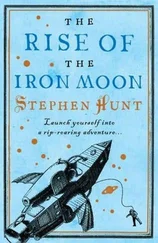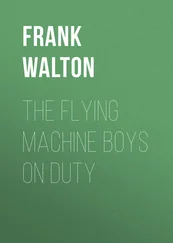During one of these lectures he was taken to task by one of his audience who argued that it was easier to persuade others to take up experiments that were not devoid of risk than to do it oneself. Chanute, honest as he was, saw the point and decided to act. But he was then 63 years old and it was obvious that he could not himself fly, so he secured the help of several young men and organized the first gliding experiments in the USA.
The example they proposed to follow was clearly Lilienthal’s, but they were also interested in making improvements. According to Chanute the most important quality of any aeroplane was the maintenance of a correctly balanced flightpath.
In the conclusion to Progress in Flying Machines Chanute wrote “the problem of the maintenance of the equilibrium is now, in my judgment, the most important and difficult of those remaining to be solved”. And he went on to stress the fact that “no amount of motive power will avail unless the apparatus to which it is applied is stable in the air”. This echoed what Hastings had set out in 1893.
All through his book Chanute insisted on this theme, using all the synonyms he could find: balance, stability, equilibrium, equipoise, adding “stable equilibrium” and “automatic stability” for good measure.
Stability and balance are not synonyms, however, and Chanute in this respect, like many of his contemporaries, was not very clear in his concept. What he really sought was stability. Inherent stability indicates that, when a flying machine deviates, for any reason, from its normal flightpath, it will revert to it of its own accord without the intervention of a human controller or of an automatic controlling device like a pendulum or gyroscope.
Inherent stability can only be obtained by the judicious placing of fixed auxiliary surfaces, like the Pénaud tail or a dorsal fin. Instability, as the word implies, is just the opposite and means that a flying machine that is deviated from its flightpath will not revert to it except by using controlling devices that have nothing to do with stability but are the means for changing a plane’s course in the air. These devices are movable surfaces, such as rudders, elevators and ailerons.
These controlling devices are essential to correct abrupt or unforeseen deviations with which an inherently stable system is unable to cope. It is in the difference between stability and control that the confusion started. A stable aircraft needs additional means to control it, but an unstable aircraft relies entirely on control to prevent it from tumbling out of the sky.
This means that a stable aeroplane will fly by itself. It can be argued that it is possible to fly an unstable aeroplane provided a skilful pilot is at the controls and is continually able to correct the irregularities of the flightpath. And it is true that aeroplanes have been flown that way, but not for long.
It must also be understood that stability and control in a way interfere with each other. A very stable plane cannot make swift changes in direction whilst a supersensitive plane will be less stable, but is also more manoeuvrable. For example birds are perfect flyers. No bird is inherently stable and its flightpath is forever conditioned by its lightning reflexes and instinctive reactions working on the nearly infinite possibilities for positioning wings and tail. But a kite, as opposed to a bird, has to be stable or it will not fly. Therefore true bird flight will forever be denied to man and this was clear to the really knowledgeable pioneers, among whom Cayley, Pénaud and Hargrave rank as the most clearheaded.
All this was not so obvious to many other experimenters who somehow regarded bird flight as the ideal to strive for — some even went to the extreme of stating that “an aeroplane of rigid form is unnatural” which may be so but then also so is a wheel. The result of this line of thought was that many pioneers were busy looking for the possibilities of putting the necessary controls on the flying machine so that the pilot would remain master of the plane’s movements. This proved to be an illusion and a dangerous one at that.
To Chanute, the balance or equilibrium which he so eagerly sought meant longitudinal stability. Pénaud had already solved this problem but Chanute was not wholly convinced, because the Pénaud system absorbed power and Chanute had noted that in France not much interest was shown in following Pénaud’s example (with the exception of Tatin), and to expend power for the sake of stability when there was not even enough available for sustentation did not seem to be an intelligent proposition at that time.
Through his research and his correspondence with Mouillard, Chanute had been won over to a system of flexible surfaces “which will give the greatest amount of stability to a kite by producing automatic adjustment to the wind’s varying intensity”. This seemed to be a good idea but “a great amount of stability” was just what flexible surfaces were not able to provide.
The greatest misjudgement Chanute made, however, was in assuming that Lilienthal not only controlled but also balanced his glider by bodily movements. However, this was not the case, although it is true that Lilienthal, after 1895, did toy with the idea of introducing movable surfaces for better balance. This may even have caused his fatal crash. Referring to Lilienthal in Progress in Flying Machines , Chanute had stated, “the necessary apparatus to fly consisted of properly constructed sustaining surfaces, skilfully operated”. The reference to skill was made many more times before a truly stable aircraft was finally introduced more than ten years later.
Among the US experimenters of the 1890s it would seem that only Langley saw the aeroplane as it really was — a vehicle using the air instead of the ground as its supporting medium — as Cayley had described it in 1809. And, since it was intended as a vehicle for transporting human beings, the overriding need was for stability in the same way that motor cars, railway trains and bicycles need smooth surfaces to travel over. Only acrobats use unstable means with which to move around in order to impress the crowds and so earn a living.
Added to this there was a more decisive factor in favour of inherent stability — a factor that was completely overlooked by the early pioneers — and that was the necessity for stability in case flying speed was lost. In the case of a stall, resulting from engine failure or any other cause, a stable aeroplane will automatically turn into a glider and, switching to gravity as an alternative source of power, it will regain flying speed by losing altitude and glide safely to earth. In an unstable craft, once minimum flying speed is lost, nothing can be done to save it, just as a stricken bird is unable to make an emergency landing.
To Chanute, the necessity for absolute inherent stability was not yet evident; he was still confused by having absorbed too much conflicting information. He thought that Pénaud’s seemed to be a good solution, but he was also fascinated by Mouillard’s ideals5, but the two solutions were contradictory.
With regard to transversal (lateral) and directional stability, these were accepted by Chanute as a matter of course and he considered that they were to be obtained by using a dihedral angle of the wings and a vertical keel (or fin). In his book he made no reference to lateral and directional control by ailerons or vertical rudders for steering (or “guidance in any desired direction” as he formulated it). He was content to point to Lilienthal’s manner of shifting the centre of gravity by bodily movements.
At the end of 1895, Chanute secured the services of Augustus Moore Herring who had just resigned from his undertaking with Langley. Chanute and Herring had been in correspondence earlier, in fact Herring had built several varieties of model gliders which Chanute designed when he was casting about for a workable configuration, and the new association worked quite smoothly at first.
Читать дальше












